hat-oil
now browsing by tag
16x20
19th
24x36
abstract
acrylic
american
antique
artist
artwork
blue
canvas
century
contemporary
decor
female
fine
flowers
frame
framed
french
girl
hand
impressionism
impressionist
landscape
large
life
modern
nude
original
paint
painted
painting
paintings
peter
portrait
rare
scene
seascape
signed
still
stretched
vintage
wall
woman
1910s Study Portrait Woman withRed Hat-Oil painting possibly William Merritt Chase

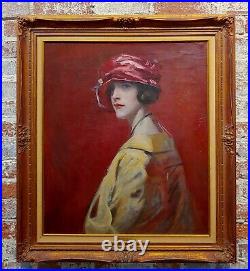

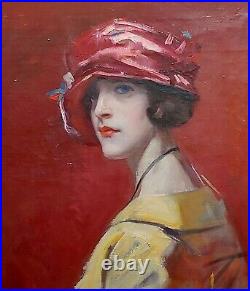
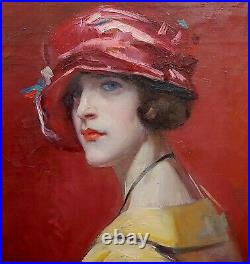
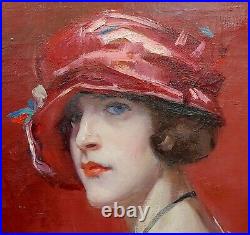
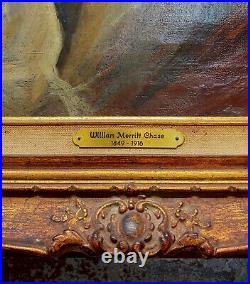
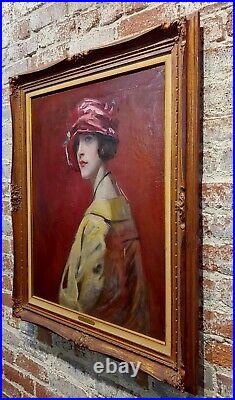
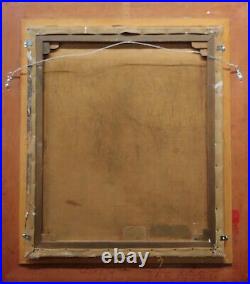

Primarily searching for the “Unique & Rare” by dealing with some of the finest acquisitions and consignments of Prominent California Estates, Large Collections and Celebrity homes from Santa Barbara, Beverly Hills, Bell Air, Hollywood Hills, Los Feliz, Malibu, Pasadena, San Marino, Newport Beach, La Jolla and most of the best locations of the fabulous West Coast. Offering here is a. Circa 1910s Study Portrait of a Woman in a Red Hat -Oil painting Possibly by William Merritt Chase. Oil painting on canvas -unsigned. Circa 1910s – possibly William Merritt Chase. Frame size 30 x 34. A native Midwesterner, William Merritt Chase became one of the more revered figures in American art because of his painting abilities and skills at conveying them to other artists. Described as the “single most important teacher of his generation, perhaps in all of American art education” (Gerdts 135), he was not committed to any one style of painting and basically considered himself a realist. He utilized elements of various styles including Tonalism, Impressionism, and Realism, and his willingness to grow and change with an evolving art world, he aligned himself with progressive groups including the Society of American Artists in New York. William Chase was very much a dedicated plein-air painter, described by art historian Prudence Pfeiffer as the most influential American artist working at the end of the 19th century who painted “en plein aire”. Chase said: I don’t believe in making pencil sketches and then painting your landscape in your studio. You must be right under the sky. (Pfeiffer)Chase was born in Franklin, Indiana to Sarah Swaim and David Hester Chase, and in 1861, the family moved to Indianapolis where he took private lessons from a local teacher, Benjamin Hayes. He then studied art at the National Academy in New York with Lemuel Wilmarth and privately with Joseph Oriel Eaton. He also spent a brief time in St. Louis, Missouri where his teacher was Munich-trained John Mulvaney. Observing his talent, four St. Louis men sponsored a trip for Chase to Munich to learn the then popular bravura style of painting at the Royal Academy. He was there from 1872 to 1878, and distinguished himself with honors and was even offered a position at the Academy, which he declined. His good friends were Frank Duveneck and John Twachtman, a threesome that traveled and painted together in Venice. He set up his studio at 51 West 10th Street, known as the Tenth Street Studio Building, a place that became a model for artists’ studio designs of the time–strong north light, ornate, luxurious, and crowded. A description of that studio is provided by Hammer Galleries: The 10th Street Studio building housed numerous artists’ studio spaces. William Merritt Chase’s studio, which he inhabited from 1878 to 1895, was especially well known its extensive collection of antique and exotic objects. Indeed, Chase modeled his studio’s grand scale and lavish decoration after the great European masters, such as Peter Paul Rubens. He used it as a marketing tool for the benefit of his business as a painter, attracting clients first to the studio and then to his skills as an artist. Chase’s studio attracted considerable attention for its unique and extensive collection of objects. As early as 1879, an article by John Moran in The Art Journal featured a description of the many wonders contained in Chase’s studio. These included, among other things: paintings, musical instruments, Venetian guns, swords, pistols, bugles, Renaissance period furniture, a bronze bust of Voltaire and a large collection of photographs of Old Master paintings. Over time, Chase also formed a significant collection of contemporary American and European paintings which he acquired mostly from artists’ studios, dealers and auctions. This collection, along with his copies after Old Masters, proved to be a source of inspiration for Chase and his students and colleagues. Indeed, Chase’s lavish and treasure filled space left a significant impression on those who saw it. Visitors to the studio related how they were most impressed by the overall harmony of effects, which amazingly managed to come across despite the eclectic mix of decorative elements and paintings. The artist carefully orchestrated and arranged his studio to create a total aesthetic effect. Chase married in 1886, and the couple lived in Brooklyn near Prospect Park, which became a popular subject for his painting and lent itself to his increasing interest in Impressionism. It was “a bit of nature that Chase could record vividly and fleetingly–an urbanized nature with sparkling figures”. He also did much painting of life in Central Park, using plein-air methods. Although he incorporated Impressionism into much of his work, as stated above, he regarded himself as independent without total commitment to any formula. Chase conducted many summer workshops throughout the East Coast and in Europe, with the best known being his school at Shinnecock, an area of beaches and dunes on the eastern end of Long Island. He and his family spent their summers there in a home designed by the architects McKim, Meade and White, and in addition to giving classes in oil and pastel painting, he completed numerous plein-air landscapes of the area. The popular school lasted for twelve seasons beginning 1891, and during this time he reflected his increasing admiration of French Impressionist/Post Impressionist painter Edouard Manet. This influence led to his abandoning dark tonal influences of the Munich School for more colorful plein-air painting and to the increasing use of pastel, which allowed more spontaneity and ease when working outdoors. Chase also painted on the West Coast in Carmel, Monterey, and San Francisco, California. He made his first trip in 1914 and taught summer classes at Carmel. William Merritt Chase died in 1916. That year in a speech at an arts dinner in Washington DC, he said: Life is very short. A beautiful piece that will add to your décor! Please check all the photos. Should you have any inquiries, please do not hesitate to ask a question or call 310 293 2442. The item “1910s Study Portrait Woman withRed Hat-Oil painting possibly William Merritt Chase” is in sale since Tuesday, September 15, 2020. This item is in the category “Art\Paintings”. The seller is “pasadena_art_monkeys” and is located in Pasadena, California. This item can be shipped worldwide.
- Size: Medium (up to 36in.)
- Region of Origin: US
- Artist: William Merritt Chase
- Style: Impressionism
- Listed By: Dealer or Reseller
- Painting Surface: Canvas
- Medium: Oil
- Date of Creation: 1900-1949
- Original/Reproduction: Original
- Year: 1910
- Features: Framed
- Main Color: Multi-Color
- Framed/Unframed: Framed
- Color: Multi-Color
- Subject: Figures
- Originality: Original


 D5 Creation
D5 Creation